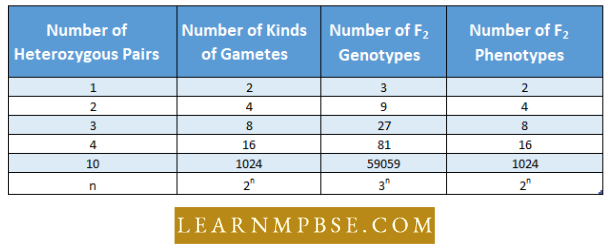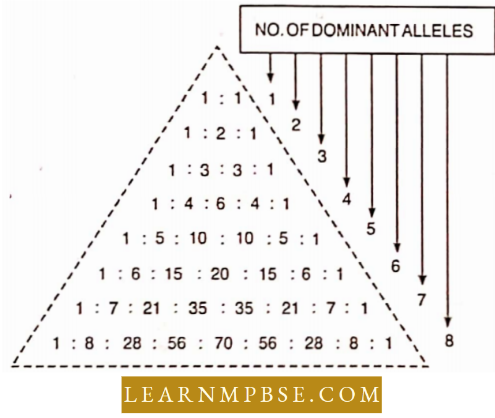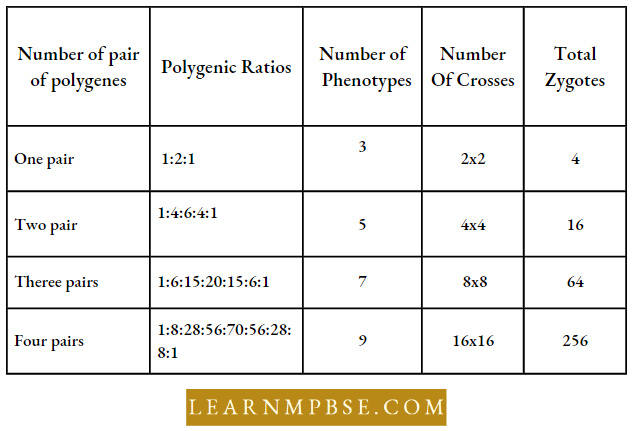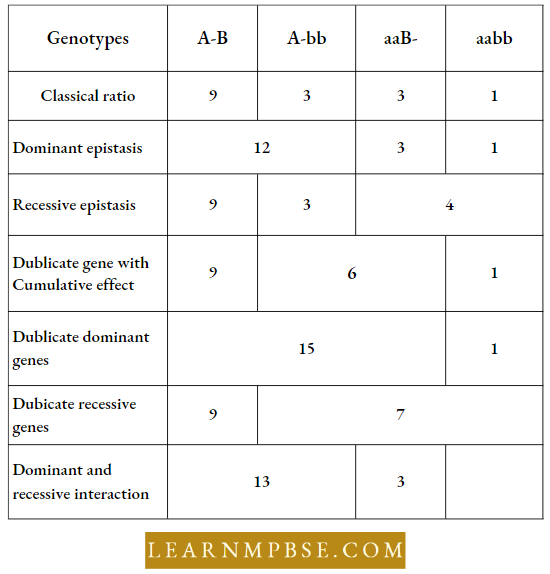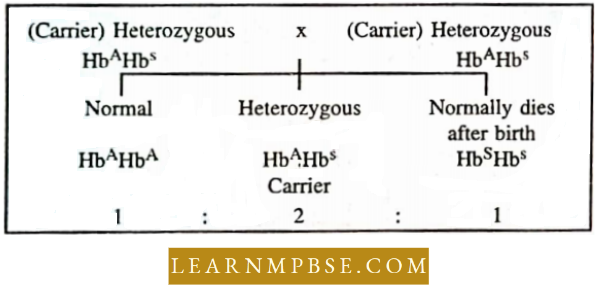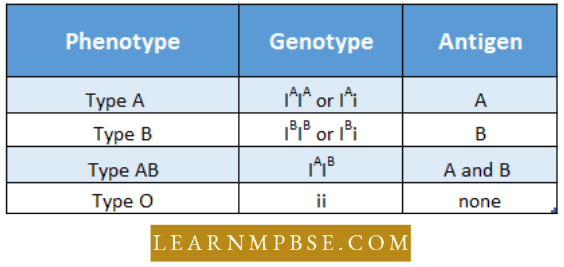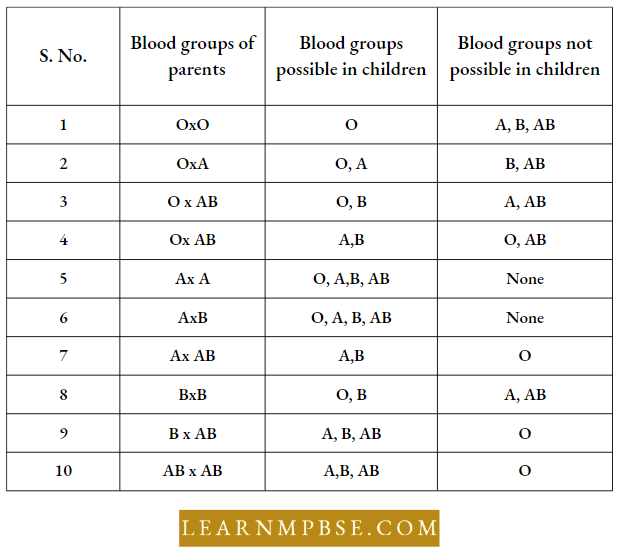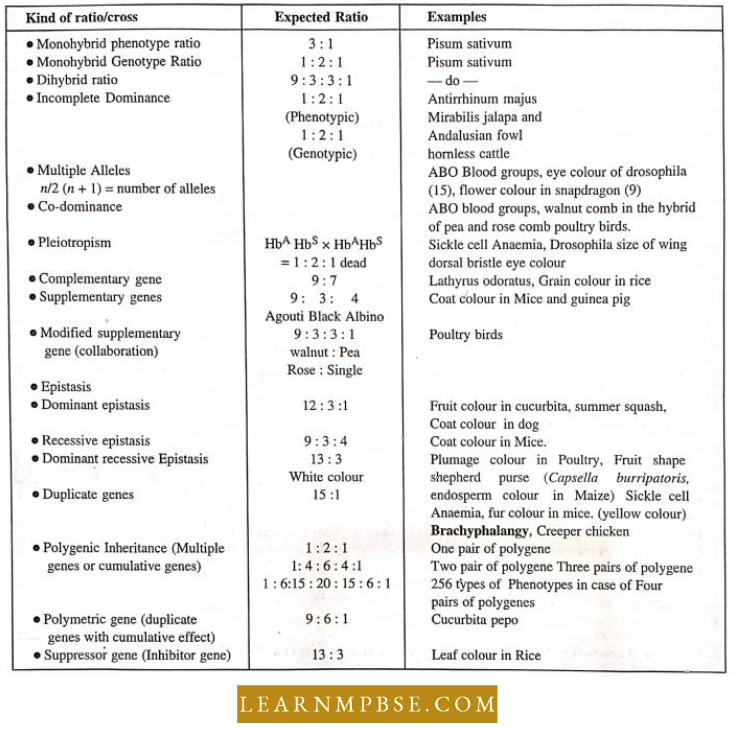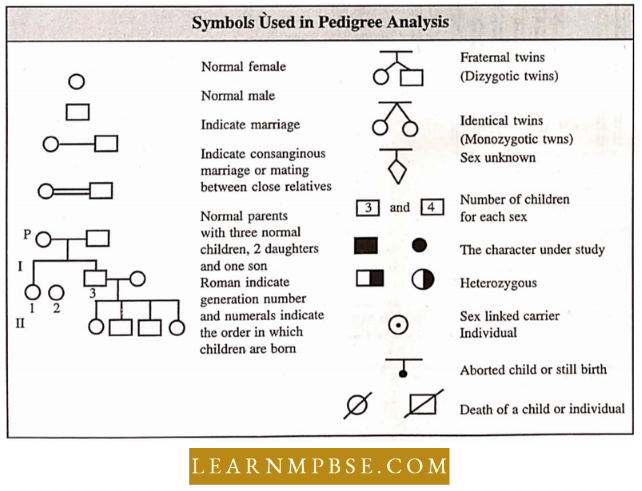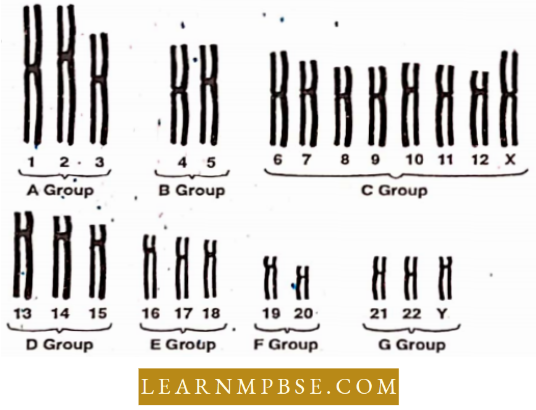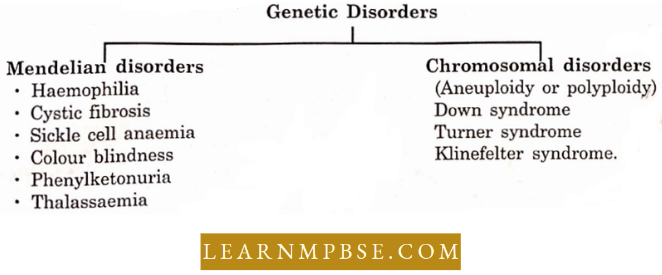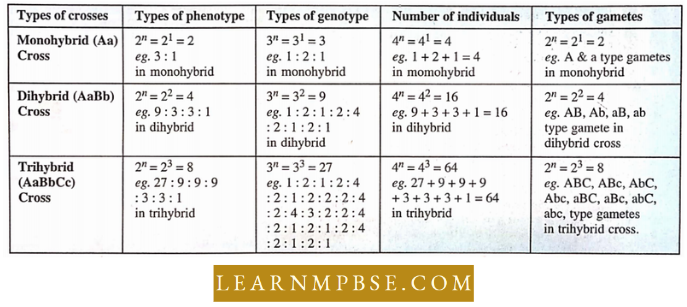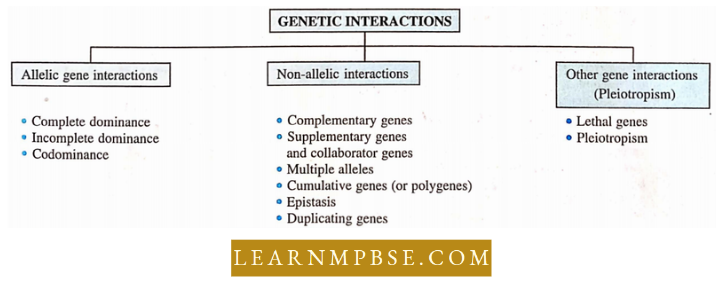NEET Biology Gene Expression And Gene Regulation
NEET Biology Gene Expression
It is the mechanism at a molecular level by which a gene can express itself in the phenotype of an organism. The mechanism of gene expression involves biochemical genetics.
- It consists of the synthesis of specific RNAs, polypeptides, structural proteins, proteins biochemicals such as enzymes.
- DNA is the master molecule that directs gene expression.
NEET Biology Gene Expression And Gene Regulation Operon Concept
Francois Jacob and Jacques Monod, in 1%1, proposed the operon concept to explain how genes express themselves. They worked on the bacterium Escherichia coli.
- When lactose is added to the culture medium of E. coli, three enzymes are needed for the breakdown of lactose.
- Structural genes code for the synthesis of these enzymes. The functioning of these genes is regulated as a single unit by the operator gene. This entire unit is called an operon. A regulatory gene switches on or off the operator gene, which in turn regulates the activity of structural genes.
Jacob and Monod (1961) investigated the nature of induction of enzyme synthesis by E. coli. Of the 800 enzymes thought to be synthesized by E. coli, some are believed to be synthesized continuously and are called constitutive enzymes; others are synthesized only in the presence of an inducer compound, which may be the substrate, and are called inducible enzymes. β-galactosidase is an inducible enzyme.
NEET Biology Gene Expression And Regulation Notes
Read and Learn More NEET Biology Notes
Gene Regulation In Eukaryotes
- The regulation of gene expression in eukaryotes is more complex than in prokaryotes.
- In eukaryotes, the gene is split into exons and introns.
- Intron is also termed spacer DNA or IVS (Intervening sequence) The molecular basis of processes such as differentiation and development, cancer, and aging, all involve differential gene expression.
- Spliccosome Mediated Splicing
Spliceosonie. Spliceosomes are ellipsoid particles of RNA and protein; they arc -25 nm x 50 nm in size. They are assembled on the RNA precursors by an association of five different small nuclear ribonucleoproteins (snRNPs) and many proteins.
- Eukaryotic nuclei and cytoplasm contain many discrete small RNA species, called small nuclear RNAs, (snRNA) and small cytoplasmic RNAs (sc RNAs), respectively.
- The processing of the bulk of mRNA precursors is mediated by particles called spliceosomes. These mRNA precursors have many introns of variable lengths.
- Interestingly, the excision of introns does not seem to proceed sequentially, i.e., beginning at one end and progressing to the other, as is the case with transcription.
- Any intron of the mRNA precursor could be removed at a given point in time, but there seem to be some preferred patterns of their excision.
- Housekeeping genes (Constitutive genes): The genes are constantly transcribed and expressed in the cells because the products they code for are constantly needed for cellular activities eg. genes for glycolysis, and ATP-ase to keep one alive.
- Non Constitutive (Luxury Genes): These genes remain inactive and are expressed in certain cells only when the product they code for is needed. They are also called specialist genes e.g. gene for nitrate reductase in plants and lactose system in E. coli.
- Viral oncogenes: A gene that can cause cell transformation in animal cells growing in culture and tumor formation in animals. They are twenty in number.
- Proto-oncogene. A normal cellular gene that can be changed to an oncogene by mutation.
- Nif (Nitrogen fixing) of plasmids: Plasmids are extrachromosomal DNA molecules present in addition to chromosomes in most bacteria. They can replicate like and independently of the chromosome. The plasmids carry genes for Resistance—R-genes and Nif (Nitrogen fixing).
- Gram +ve gene: The gram +ve gene is present in gram +ve bacteria which take up the gram stain. They retain the blue color and are called Gram +ve bacteria.
- Polygenes (Multiple genes/cumulative genes). There are many characteristics in both plants and animals that are controlled by cumulative action of dominant alleles of generally two or more independent genes e.g. height, weight, skin color in man, number of grains in an ear, and size of fruits.
- The grani-ve gene is Present in Gram-ve bacteria which do not take up the blue colour of the Gram stain. The gram-ve bacteria can be observed with another stain such as safranin.
- Inducible genes. Non-constitutive = Luxury gene, = Specialist gene.
- Structural genes These genes code for chemical substances that contribute to morphological or functional traits of the cells.
- These are nowadays called cistrons. These are of two types-Monocistronic and Polycistronic (code for many RNAs)
- Polypeptide-coding genes These code for mRNA which in turn code for polypeptides.
- Polyprotein-coding genes These code for more than one polypeptide per gene.
- RNA coding genes Code for sRNA and tRNA. They are randomly repeated in the chromosomes.
- Regulator genes Code for repressor proteins to regulate the transcription of cistrons.
- The operator gene acts as a switch to turn on or off the transcription of a structural gene.
- Promoter genes These genes are DNA sites where RNA polymerase binds for the transcription of RNA by the structural genes.
- Terminator genes These genes are DNA regions where RNA polymerase activity stops to suspend the transcription of structural genes for example., UAA(Ochre), UAG (Amber), UGA (Opal)
- Split genes Genes carrying information in pieces rather than in a continuous stretch are known as split genes such as introns /exons. The eukaryotic gene is split into exons and introns.
- Introns. Eukaryote genes have inserts called introns which are transcribed but not translated between segments.
- Exons are inserts of eukaryotic genes which are translated as well as transcribed.
- F-gene (Fertility factor) contains genes for producing sex pilli and other characteristics needed for gene transfer.
- Muton A segment of DNA that takes part in mutation
- Subvital Genes Many mutant genes reduce the viability of the individuals carrying them in the appropriate genotype as compared to that of the normal individuals.
- Such genes kill less than 90% of the individuals in which they are present in the appropriate genotype.
- Most of the mutant genes are subviral in their effect, for example., miniature wings in Drosophila, some viridis mutants of barley, etc.
- Vital Genes Those genes that do not affect the survival of the individuals in which they are present are known as vital genes.
- Such genes neither enhance nor reduce the viability of the individuals carrying them. It does not imply that these genes are not necessary for the survival of the concerned organism.
- It simply means that the survival of the organism is not affected by the fact that the concerned vital genes are present in the homozygous or heterozygous state. Wild-type alleles of all the genes of an organism are regarded as vital genes; they serve as the reference point in determining the effect of mutant alleles on survival.
- Supervital Genes Some mutant alleles enhance the survival of those individuals that carry them in the appropriate genotype as compared to that of the wild-type allele, such genes are known as super ital genes.
- Genes for disease resistance in a crop species may be regarded as superficial genes as they protect the individuals carrying them against the concerned disease and thus increase the chances of their survival in the presence of the concerned disease.
- Similarly, genes conferring resistance/tolerance to the various abiotic stresses, for example., salinity, alkalinity, high temperature, low temperature, drought, etc., may also be regarded as superficial genes in that they enhance the fitness of the plants in the presence of the concerned stress.
- Single Copy Gene They are present in a single copy (occasionally 2-3). They form 60-70% of the functional genes. Duplication mutation and exon reshuffling between two genes result formation of new genes
- Repeated Genes These genes occur in multiple copies for example.,
- Histone genes
- Actin genes
- t-RNA and
- rRNA genes.
- Multigenes (Multiple Gene Family). It is a group of similar or nearly similar genes for meeting the requirement of time and tissue-specific products e.g. globin gene family (ε,β,δ,γ) on chromosome 11, α, and β on chromosome 16.
- Pseudogenes These are genes that have homology to functional genes but are unable to produce functional products due to intervening non-sense codons, insertions, deletions, and inactivation of promoter regions for example., several snRNA genes.
- Processed genes Eukaryotic genes which lack introns, are formed probably due to reverse transcription or retroviruses. They are generally non-functional due to a lack of promoter genes.
NEET Biology Gene Expression And Regulation Notes
NEET Biology Gene Expression In Viruses
The term virus’ was coined by Dmitry Iwanovsky in 1892. Viruses are nucleoprotein structures devoid of cytoplasm, motility, irritability’ and energy generation they are intracellular obligate parasites using the metabolic machinery of their host for the multiplication and assembly of their parts.
- In a cell-free environment, a virus is inert and called a virion. It can be crystallized. Smallpox is the first viral disease studied by man.
- The first virus studied was the Tobacco Mosaic Virus (TMV). Mayer (1880) found that the sap of plants infected by Tobacco Mosaic could cause disease in healthy plants.
- Swarovski (1892) found that the infective property of sap remained intact even after passing through bacteria-proof filters.
- Viruses were first seen under a microscope by Takahashi and Rawlins (1933). TMV was crystallized by Stanley (1936).
Viral Reproduction Occurs By Following Ways
- Lytic cycle in case of T4 and other T even bacteriophages
- Lysogenic cycle in case of λ (Lambda) phage.
- Reproduction in single-stranded viruses such as Φ×l74 and coliphage fd. This single-stranded DNA is a plus strand and it forms a complementary negative strand, thus temporarily viruses become double-stranded.
- The double-stranded DNA or replicative DNA takes control over the machinery of the host and synthesizes strand DNA and protein for the assemblage of new viral particles.
- Pinocytic Reproduction. The whole virus enters the host cells except the envelope. It is quite common in RNA viruses which are of two types :
RNA-RNA Viruses. DNA has no role in their multiplication.
After entering the host cell the viruses produce enzyme replicase which helps in producing more genetic RNA over the template of the present RNA genome. The latter also produces mRNAs for the synthesis of viral proteins.
RNA-DNA Viruses. They are also called retroviruses (Temin, 1970, e.g., Tumour/ Cancer Viruses, HIV) The viruses possess enzyme reverse transcriptase (Temin and Baltimore, 1972; in Rous Sarcoma Virus or RSV of Mouse).
- The enzyme builds DNA over the RNA genome. The phenomenon is called reverse transcription or feminism.
- The copied DNA (cDNA) builds its complementary strand. The double-strand copy DNA attaches to the host DNA/chromosome and is now called a provirus.
- It produces a chemical that disturbs cellular machinery. The cell with provirus may dedifferentiate and start dividing leading to cancer (uncontrolled growth forming tumor which sends branches/roots to invade different parts.)
- Some 20 viral oncogenes (genes that trigger cancer) have been recorded. However, no virus has been proven to cause cancer in humans.
- Humans have some protooncogenes (similar to viral oncogenes)which take part in growth but under certain circumstances, they get changed to cellular oncogenes.
- Jumping genes/transposons can also cause cancer. There are several chemicals, physical factors, and some viruses (e.g., Hepatitis B, Herpes, Papilloma, and Epstein-Barr Virus) that promote cancer.
- HIV (Human Immunodeficiency Virus) destroys the immune system of the body and causes AIDS. The provirus ultimately dissociates, transcribes viral RNA genomes, and produces reverse transcriptase and viral proteins.
- Different parts assemble to form retroviruses. The latter comes out through exocytosis or passes out to other cells through protoplasmic connections.
NEET Gene Expression And Regulation Chapter Notes
NEET Biology Gene Expression Gene Expression In Prokaryotes
In 1946, two American scientists, J. Lederbcrgand E.L.Tatum demonstrated sexuality in bacteria for the first time, and this opened a new era of research.
- The prokaryotic chromosome is circular. It is represented by a single double-stranded DNA molecule.
- It is usually attached to a cell membrane at one point and does not integrate with histones and is not bound by a membrane for example., bacteria and blue-green algae (cyanobacteria). Bacterial DNA is associated with few proteins. The genome of E.cali contains 2000 to 3000 genes.
- The bacterium can survive on a glucose diet giving the idea that its genes have information for the synthesis of practically all the organic compounds it needs.
- Mycoplasma (PPLO) has a genome of a few hundred genes that code for a few proteins. Bacteria divide very rapidly.
- The doubling time is also called generation time and it may be as low as 20 minutes. Bacteria mainly reproduce by asexual reproduction but do not exhibit true sexual reproduction as they do not produce a diploid phase. Thus, meiosis is lacking. However, bacteria exchange genetic material between two cells.
Modes Of Genetic Transfer In Bacteria
Three modes of genetic transfer between bacterial cells are:
- Transformation
- Transduction
- Conjugation.
Transformation. It is also called the Griffith effect or the Recombination effect.
- The phenomenon by which DNA isolated from one type of cell, when introduced into another type can bestow some of its properties into the latter, is referred to as transformation.
- It was confirmed by Griffith with his experiments on the bacteria Streptococcus pneumoniae. Griffith used S-3 and R-2 strain out of S-1, S-2, S-3, and R-1, R-2 and R-3 strains
Transduction. The transfer of genetic material from one bacterium to another through bacteriophage is called transduction.
Transduction It Is Of Two Types:
- Restricted and
- Generalized transduction.
Conjugation:
Conjugation refers to the unidirectional transfer of DNA between cells via a cytoplasmic bridge. The process is analogous to sexual reproduction in eukaryotes.
- Occasionally, the F factor integrates into bacterial chromosomes. Such bacteria can transmit their genetic material into female cells with high frequency (Hfr) in a specific sequence.
- These are referred to as Hfr strains. Conjugation was initially established by Lcdcrberg and Tatum in Escherichia coli.
- The recombination frequency was exceedingly low in Lederberg’s studies. Hayes (1952) identified a strain of E. coli exhibiting a recombination frequency 100 to 1000 times greater than that reported by Lcdcrberg.
- The strain was designated as the high-frequency recombinant (Hfr) strain.
Conjugation It Is Of Two Types :
- Sterile male method
- A fertile male method that results in the formation of Hfr maniac or Supermale.
NEET Biology Gene Expression And Regulation Revision Notes
NEET Biology Gene Expression And Gene Regulation Important Contributors
Robert Briggs and Thomas Kings. Conducted experiments on nuclear transplantation and concluded that nuclei undergo some change during differentiation.
- Johanssen. Introduced and defined the term gene.
- Beadle And Tatum. Conducted experiments on Nenrospora and proposed one gene-one enzyme hypothesis. Yanofsky. Proposed one gene-one polypeptide hypothesis.
- Jacob And Monod. Found that genetic material possesses regulator gene units called operons. Shared Nobel Prize with Lwoff of France (1965).
- Pirk And Bowden. They found the nucleoprotein nature.
- Stanley. He was the first to isolate Tobacco Mosaic Virus (TMV) and crystallize the same. Lcdcrberg and Hayes discovered Plasmids.
- N.C. Jacole and Wolfman found the conversion of the plasmid into episome.
- Paul Berg— father of genetic engineering transferred gene SV 40 Virus into E.coli
- Safferman and Morris discovered cyanophages Barbera McClintock (Lady Mendel) discovered jumping genes. (The term transposon was given by Hedges and Jacob)
NEET Biology Gene Expression And Regulation Revision Notes
NEET Biology Gene Expression And Gene Regulation Gene Expression Synopsis
Prions (Prp) self self-duplicating protein molecules discovered first by Alper et al (1966) and cause diseases like scrapie and Kuru
- The term gene was given by Johanssen and genes are arranged in a linear order and the term Genetic code was given by Gamow.
- Cosmids are plasmids in which particular (passenger) DNA sequences have been inserted. They are novel vectors that combine the features of a plasmid and 1-phage. It carries genes for resistance to antibiotics. A cosmid has two sites of the RE enzyme
- Episomes are genetic elements of dual capacity to existing either as a chromosomal or as an extrachromosomal genetic element and are non-essential to the cell.
- Pseudogenes are DNA sequences derived from m-RNA through reverse transcription.
- Cancer-causing genes are called oncogenes (Discovered by Michael Bishop and Harold Varmin).
Nearly 20 viral genes have been identified which are involved in triggering cancerous cells.
- In 1988 Watson accepted the job as co-ordinator of “The Human Genome Project. ” Recent work in genetics is being done on this project.
- Carlson et. al. 1972 for the first time used the leaf protoplasts of Nicotiana glauca and N.langsdorjfii and successfully regenerated an interspecific hybrid plant.
- 2, 4-D promotes callus formation in cereals.
- Mitra and Kaul (1964) were among the first to produce risperidone from Rauwoljfia serpentina tissue culture. H.Kohn et. al. (1985) produced somatic hybrids in tobacco.
- Repetitive DNA. It consists of DNA nucleotides or base sequences which are few to several human base pairs (bp) long and are present in several to million copies per genome. Short sequences of bases are repeated hundreds of times in DNA.
Unique DNA. It consists of those DNA segments whose base sequences are present only in a single copy per genome i.e. their base sequences are not repeated in the genome.
- Promiscuous DNA. The DNA segments that have migrated from one organelle to another organelle i.e. chlo- roplast to mitochondria or vice versa.
- The discovery of promiscuous DNA has lent support to the endosymbiotic hypothesis of the origin of chloroplast and mitochondria.
Replication is of three types: viz
- Conservative. A new strand is formed over the existing strand
- Disruptive. Old strand undergoes fragmentation, the fragments synthesize complementary structures both of which assemble to form two replicas
- Semiconservative. Because of the sequential opening of the DNA double chain and its replication to form two new chains DNA replication is called Zipper duplication.
Effect Of Medium Supplements On The Growth Of Mutants Of Neurospora Crassa:
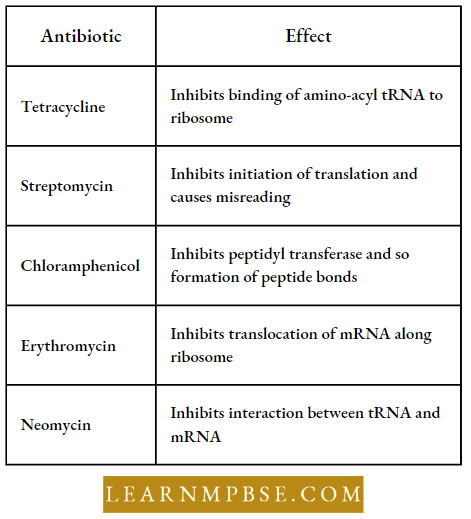
NEET Biology Gene Expression And Regulation Study Material
Some Inhibitors Of Bacterial Protein Synthesis:
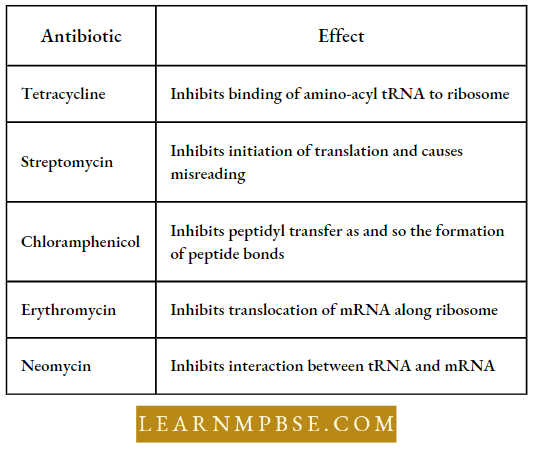
- RNA Polymerase 1. This enzyme is located in the nucleolus and is responsible for the transcription of ribosomal RNA. Polymerase I is not sensitive to a-ainanitin which is a bicyclic octapeptide.
- RNA Polymerase 2. This polymerase is located in the nucleoplasm which is part of the nucleus other than nucleolus. This enzyme is the major component of RNA polymerase activity, and it transcribes all the genes that produce mRNA.
- In eukaryotes, the transcript is initially in the form of mRNA precursors, called heterogeneous nuclear RNA (mRNA) which are later processed into mRNA (see, later). Polymerase I activity is rapidly inhibited by low concentrations of α-ainanitin.
- RNA Polymerase 3. It occurs in nucleoplasm and transcribe RNA and 5 RNA genes. It is inhibited by high levels of amanitin in animal cells but not in yeast and insects.
Inducer. A substance of low molecular weight that combines with a repressor and thus decreases the repression of protein synthesis. Repressor. A protein that switches on or off the operator gene is termed a repressor.
Gene Expression And Regulation NEET Chapter Summary
- Promoter. A part of an operon; is a nucleotide sequence to which RNA polymerase binds and initiates transcription. Also, a chemical substance that enhances the transformation of benign cells to cancerous cells.
- Regulator gene. A gene that controls the rate of expression of another gene or genes. Example: The operon involved in lactose production of Escherichia coli has a regulator, an operator, and structural genes.
- Operator gene. A part of an operon that controls the activity of one or more structural genes.
- Operon. A group of genes makes up a regulatory or control unit. The unit includes an operator, a promoter, and structural genes.
Structural genes. A gene that controls actual protein production by determining the amino acid sequence (cf. Operator gene and Regulator gene.)
- Cistron. A gene segment that transcribes a single stretch of RNA is called a cistron or it is a unit of function in DNA
- Polycistronic. The long messenger RNA covering all the cistrons is called polycistronic.
- Introns. The regions of a gene which does not form part of mRNA and are removed during RNA processing before mRNA formation are referred to as introns.
- Exons. The region of a gene, which becomes part of mRNA and codes for different regions of the protein is referred to as exons.
Repressive enzyme.
Enzymes are synthesized in a cell in the absence of its final product. It is suppressed when the final product accumulates.
- The enzyme that can be activated. An enzyme is generated only in the presence of a substrate that functions as an inducer. Constitutive enzyme. An enzyme is synthesized in constant amounts irrespective of need (compared with inducible enzyme and repressive enzyme).
- Sexduction.The integration of bacterial genes via sex factors and their subsequent transmission through conjugation to a recipient cell.
- Sexual element. An episome (F+ in E. coli) allows a bacterial cell to serve as a donor of genetic material. The episome can be moved inside the cytoplasm during conjugation or integrated into the bacterial chromosome.
- Genetic equilibrium. State in a population of interbreeding organisms where specific gene frequencies remain unchanged across several generations.
Hfr. High-frequency recombination strain of Escherichia coli: the F episome is integrated into the bacterial chromosome.
- Lysis and Lytic bacteria. Bursting of a bacterial cell by the destruction of the cell membrane following infection by bacteriophage and such bacteria are called lytic bacteria.
- Lysogenic bacteria. Those harboring temperate bacterial phages.

